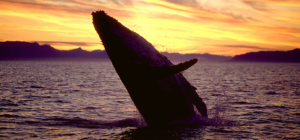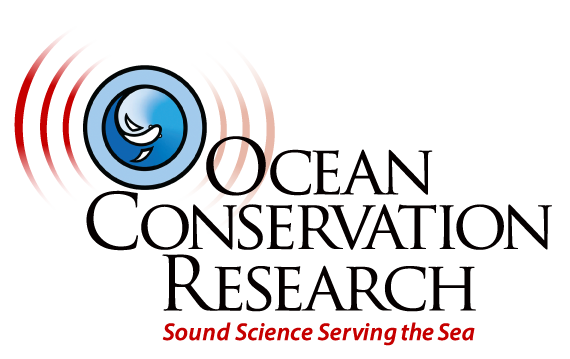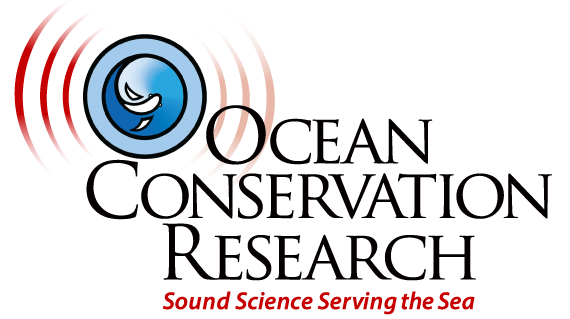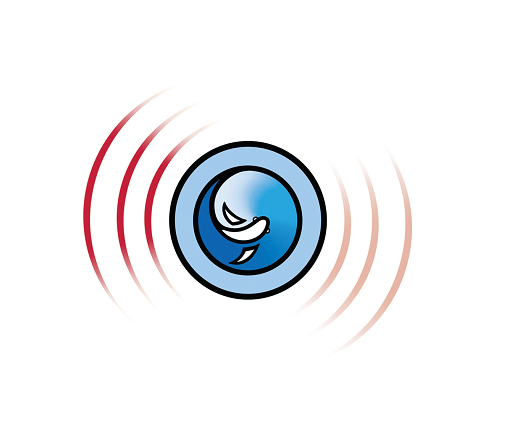2023 Progress Report

Usually when we get to this point in the year where the weather chills pretty fast (in the north) and we are faced with all of the various cultural and religious celebrations of the winter solstice, it is common to wonder “where did the year go?” But for OCR, oddly, this previous year was thick enough to give us a sense of continuity in transitions, accomplishments, and events.
A lot of this is probably a result of our becoming our own 501(c)(3) after years of being fiscally sponsored by the Ocean Foundation. In retrospect, this transformation process seems a bit like emerging from a chrysalis – a wet and cramped process from caterpillar to butterfly that has brought us to this point of asking “what the heck do we do with these wings?”
Much of this consideration has been – like chrysalis gestation, completely internal. We didn’t go to Washington DC for “Ocean Day” this year to engage policymakers and regulators, “polishing the marble” on ocean noise issues. And while we did provisionally participate in the reassembly of the National Environmental Policy Act, perhaps the most dynamic transition for us has been distancing ourselves from some of the big eNGO collaborative groups who have been breathlessly clutching their pearls and advancing offshore wind power as a direct replacement for fossil fuel.
The turning point for us involved our not willing to sign on to our collaborative comments on offshore wind-farm proposals that did not include the most obvious solution to decarbonizing our economy- advancing the use of less energy.
With the big eNGOs reluctant to promote intelligent national energy policy, my participation in crafting ocean noise impacts text for our collective comments about “responsible wind power” fits under the “pushing the deck chairs around on the Titanic” rubric.
Initially I found this corporate eNGO resistance confusing, erroneously thinking that our shared objectives involved preserving our common global habitat. But in excavating a bit more, I find that most of the large eNGOs are in the hot-tub with the large energy companies – who don’t care where the energy is generated, as long as they can sell it.
I’ll elaborate on this in a future newsletter, but this shift has allowed us to re-focus – spending a bit more time on science, research, and education.
This can be really fun! One of our educational adventures involved taking a two AP Bio classes from San Rafael High School (SRHS) out on the Derik M. Bayliss research vessel in our “Sounds of the Bay” voyage program.
We don’t just drop hydrophones in the water, we also drag “manta trawl” zooplankton nets to capture, observe, and identify “zoops,” measure temperature, pH, salinity, and turbidity, and sample the benthic mud below our sound sample sites. We had tons of help from the SRHS biology teacher Kent Morales, estuary marine scientists Allison Adams with San Francisco State University, who helped us with the zooplankton station, and Eric Mueller with the Exploratorium, who was performing benthic samples.
Our original Bay voyage was on the Freida B schooner (before Covid) with kids from the Bayview – Martin Luther King elementary school, with fourth and fifth graders. Frankly, we didn’t get a lot of science done on this voyage, but we are introducing students to the idea that taking marine science cruises and learning about the ocean is something they can do for a living.
We always see lots of lights that go on in these kid’s eyes during these trips. Just one small example was when a couple of 4th grade Spanish-speaking girls in our Bayview voyage came up with a way to tether our hydrophone cable to the boat rail. Watching their engineering minds intersect with their ability to collaborate on solving an engineering problem was truly inspiring. I let them know, and asked them to solve other engineering problems on the rest of the voyage.
I have no idea where my comments go with these kids, but I think we all can remember when some simple comment by an elder helped us establish a tent peg of who were are today.
Other educational efforts include the many educational videos that OCR’s Communications VP Daniela Huson has produced. She dug into the celebration of the 50th anniversary of the Marine Mammal Protection Act (MMPA) with a series of videos celebrating the Act, and continues to develop our Marine Life Communication series.
These videos are more than cul-de-sacs for our ideas, they are being shared around the world and watched by our now pretty-extensive social networking reach (~million followers worldwide-wide!). We know that the more people know about the ocean, the more they love it. And the more they love it, the more they want to protect it. Ocean evangelism…
On evangelism; I can say that the more I excavated Offshore Wind (OSW) Turbines these last two years, the more I realized that they will be generating stunning amounts of “infrasonic” acoustical energy. This is a problem because both migrating birds and navigating whales use this energy band for navigation cues. And unfortunately due the physics and economics of OSW, we really won’t know the impacts until it is perhaps too late – unless we think it through.
I took my findings to a couple of scientific conferences this year, and have a paper in review about it. Once published, we’ll flog it for – hopefully – regulatory effect.
I could go on, but I’ve committed to limit these letters to a single piece of paper. Although in closing – we are deeply indebted to you for your support over the years – without which we would not be where we are – wings and all!
Sincerely,
Michael Stocker


